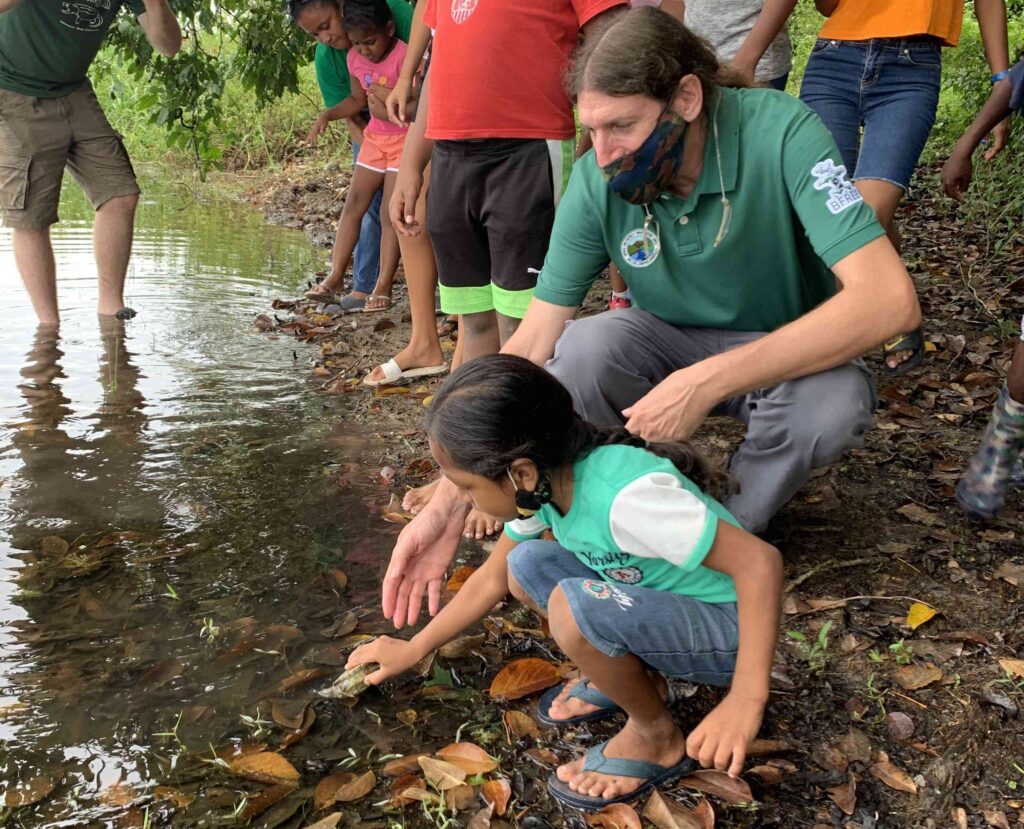Conservation
New Collaboration between BFREE, Penn State University, and University of Tennessee Knoxville
BFREE is excited to announce a new innovative collaboration among faculty and students from Penn State University, the University of Tennessee, Knoxville, and BFREE. The overall goal is to build on BFREE’s cacao agroforestry program by initiating science-based projects that both develop and enhance our understanding of the novel cacao-based agroforestry systems at BFREE and,…
Read MoreFinding Hope Amidst the Loss
A memory that is deeply lodged inside my brain – me, at the age of ten, navigating a trail behind my house winding through the lush broadleaf forests to the purpose of my being, the Belize River. A river that is deep and wide, created by two rivers colliding into one another. My heart pounds…
Read MoreThe Importance of Involving Local Communities in Conservation
By Jaren Serano I vividly recall my first time on the Belize River, navigating a canoe while assisting in population surveys for a Hicatee assessment. Despite my Belizean upbringing, my familiarity was primarily inland, leaving the fishing communities’ way of life somewhat foreign to me. Engaging in river-based research marked my initial exposure to the…
Read MoreJaren Serano returns to BFREE as Dermatemys Program Coordinator
By Jaren Serano During my first stint at BFREE, I had the privilege of witnessing the positive impact that organizations like this have on land conservation, wildlife protection, and the conservation efforts among the local communities in Belize. When I joined as BFREE’s first Science and Education Fellow in 2017, I was immediately drawn to…
Read MoreThe Fascinating Characteristics of Sundew
By Mark Canti The astonishing characteristics of sundews are unbelievable to me. During two research trips with Dr. Rob Naczi of NY Botanical Garden, I learned a lot about plants, especially sedges. I was introduced to carnivorous plants and found them fascinating. I was shocked to learn that while walking around, we have been stepping…
Read MoreCacao Fellow Assists in Country-wide Sedge Survey
by Mark Canti Last month, I participated in a research expedition to understand biogeography and documentation of sedges in Belize and to fill in gaps that previous botanists have left unexplored and unidentified. My role throughout this research was to help navigate, locate, and identify existing, new, or unusual sedges, but most importantly to learn…
Read MoreNaming Opportunity for a New Species of Beaksedge
By Dr. Robert Naczi and Heather Barrett Through his research to document the diversity and conservation status of Belizean sedges, Dr. Robert Naczi of New York Botanical Garden recently discovered a species of beaksedge previously unknown to science. In Belize, the Sedge Family (Cyperaceae) is one of the five largest (most species-rich) plant families. Beaksedges…
Read MoreThe Science of Fine Chocolate
by Jacob Marlin The flavor attributes of chocolate, especially fine flavor chocolate, is determined by numerous factors: 1. Genetics of the cacao, 2. The farming practices implemented, 3. The location, biophysical features, and climactic conditions of where it is grown (also called terrior), 4. The time of harvest, 5. Fermentation protocols, 6. Drying methods, and…
Read MoreFrom Bean to Bar: BFREE’s cacao program bears fruit
Over the past three years, BFREE has been doing research and experimentation to develop a model for farming the BFREE Criollo cacao, under its for-profit – Crioco Cacao, LLC. The goal is to create healthy and productive trees that yield cacao beans that are ultimately made into some of the world’s best Heirloom Fine Flavor…
Read MoreBillboards installed across Belize share a very important message, Save the Hicatee.
By Robynn Phillips, BFREE Engagement and Communications Coordinator BFREE, our committed partnering organizations and this year’s Hicatee Awareness Month Planning Committee are excited to announce that two (2) billboards have been strategically installed along Belize’s Western Highway. The billboards were printed and installed by Big Signs Belize at the following locations: Mile 47, George Price…
Read More

